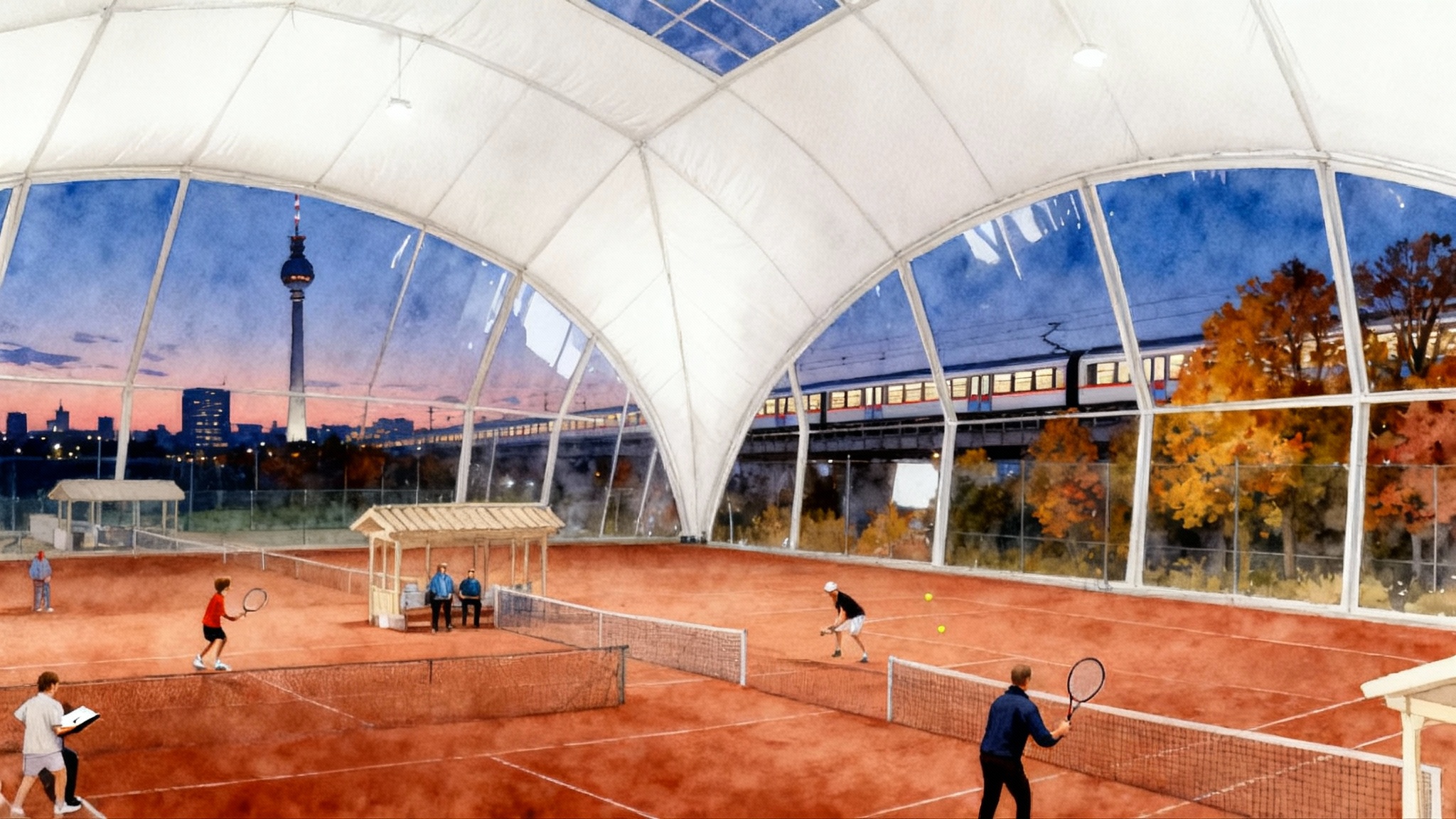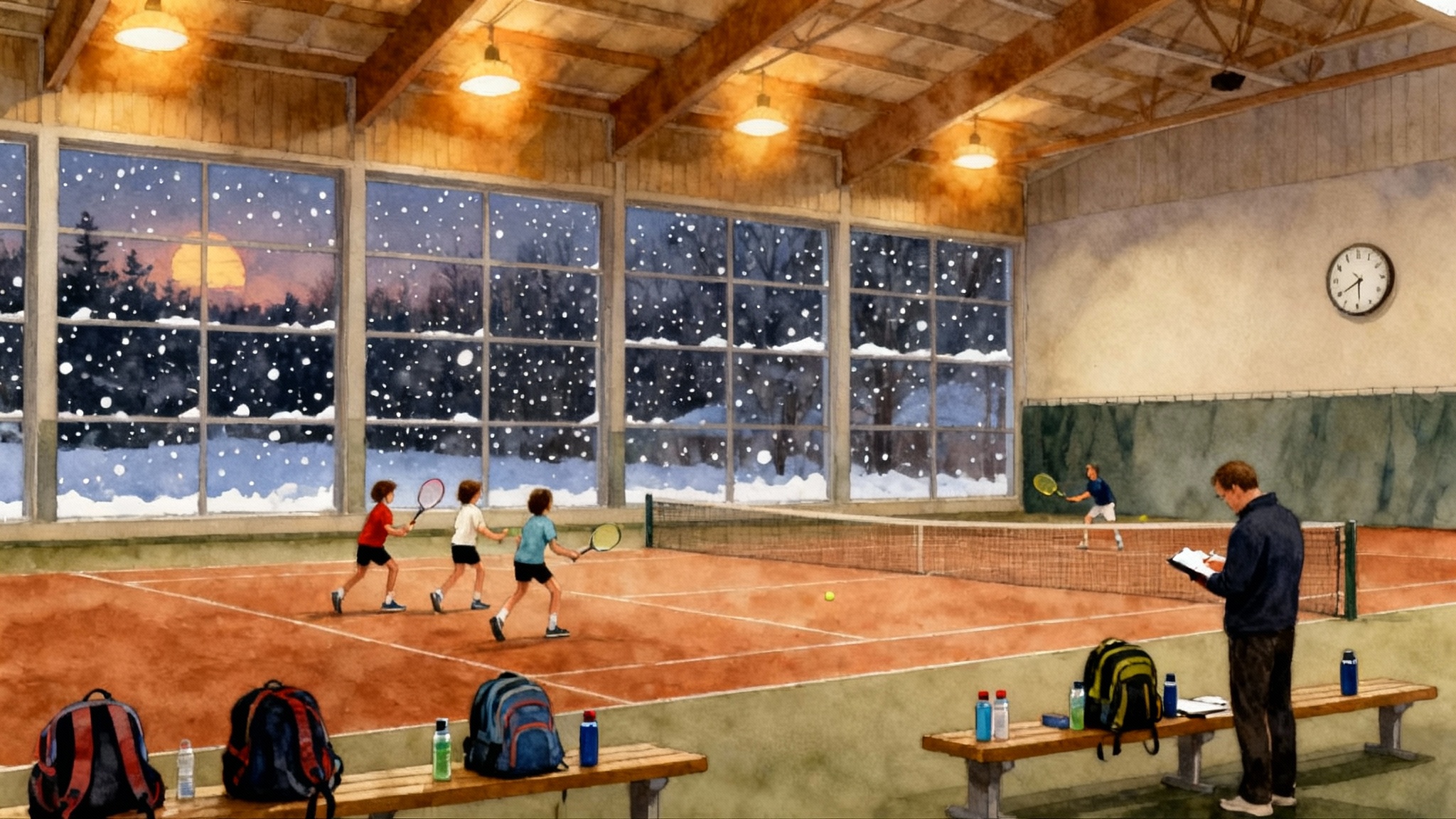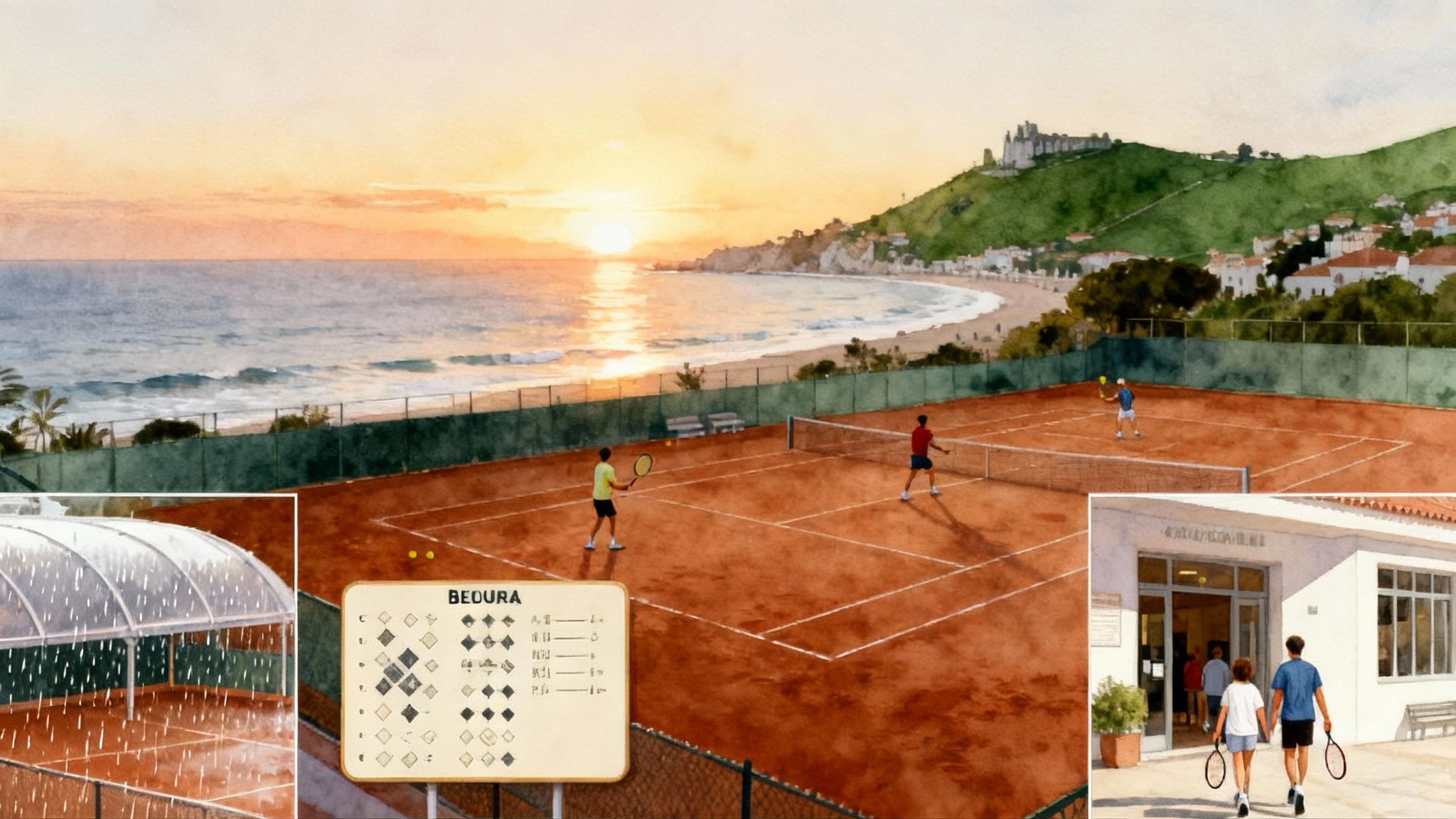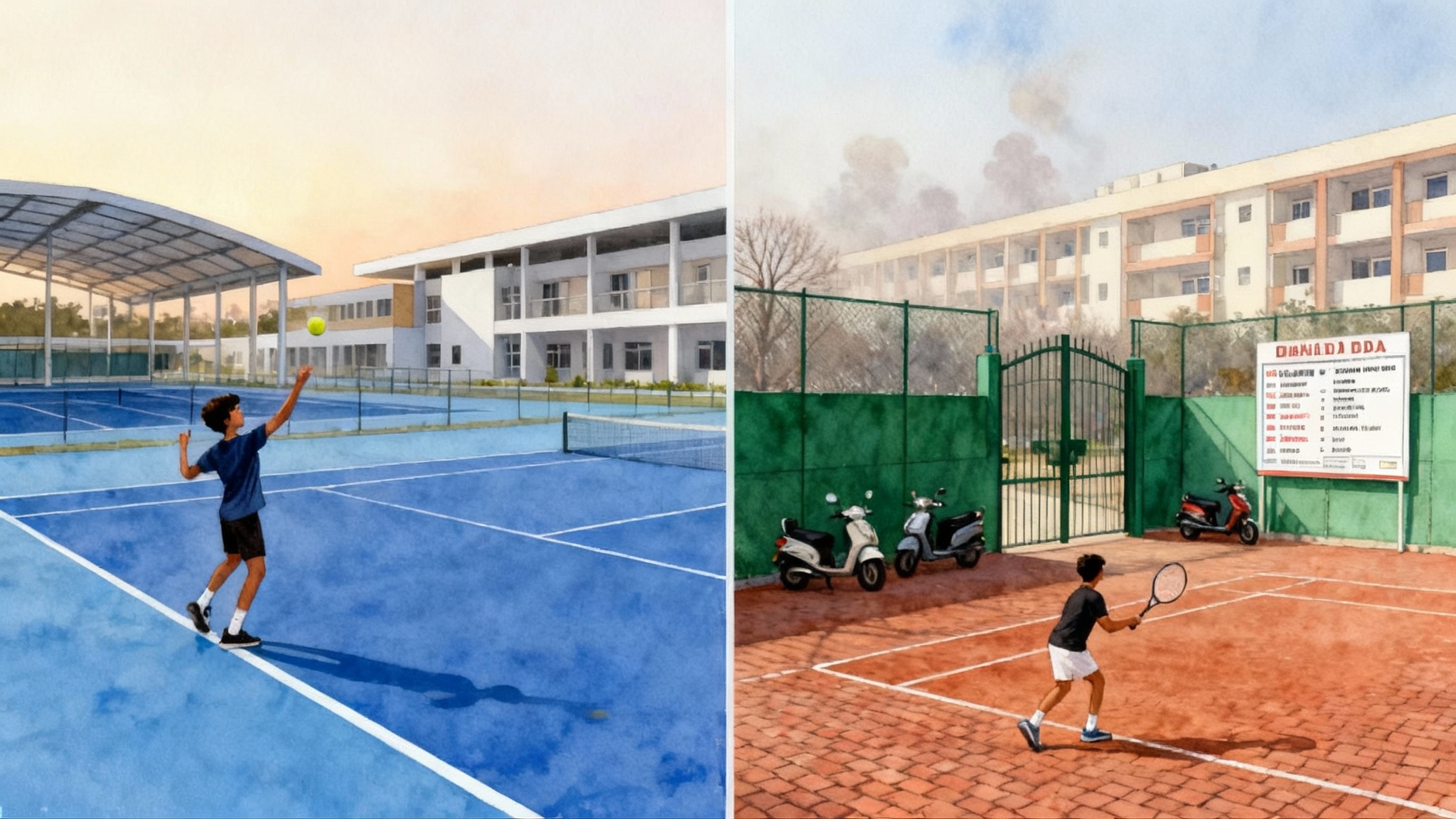Top Tampa–Sarasota–Naples Tennis Academies 2025–2026 Guide
A clear, side‑by‑side comparison of West Florida tennis academies for juniors and adults. See coaching models, court surfaces, cost tiers, training hours, match‑play access, and indoor backup for summer storms.

Why West Florida is a year‑round tennis lab
Between Tampa’s big‑program energy, Sarasota’s high‑performance pocket, and Naples’ refined training scene, the I‑75 corridor is one of the best places in the United States to build a tennis plan for 2025–2026. The climate gives you eleven solid months outdoors, the player density guarantees sparring partners at almost every level, and the calendar is packed with tournaments from entry level to professional. The challenge is not finding a program, it is picking the right fit based on goals, budget, commute, and the realities of summer storms.
This guide compares the region’s most asked‑about academies for both juniors and adults, with a spotlight on Sarasota’s Celsius Tennis Academy and nearby options. You will find the coaching approach, surfaces, cost tiers, training hours, match‑play pathways, facilities, and indoor or covered backups. We also include commute tips, sample weekly schedules, and an enrollment timeline for Spring through Fall 2026.
For a South Florida comparison, see Best Miami and Fort Lauderdale academies. For a big‑city contrast, see Best New York City academies.
How to use this guide
- First, clarify the goal: college pathway, tournament performance, adult league results, or overall skill and fitness.
- Second, match the goal to coaching model and training hours, not brand name alone.
- Third, map commute reality at your player’s actual practice time window, then check storm backups for June through September.
When you see initials, we expand them once: Universal Tennis Rating is UTR; United States Tennis Association is USTA; International Tennis Federation is ITF; National Collegiate Athletic Association is NCAA.
Spotlight: Celsius Tennis Academy, Sarasota
Celsius is a boutique high‑performance program that has grown by focusing on individualized coaching and small‑group intensity. The academy announced a new home at the Boys and Girls Clubs of Sarasota and DeSoto Counties on Fruitville Road, with phase one featuring four new acrylic hard courts and a clubhouse. You can verify current training blocks and fees on the official page for Celsius 2025–26 programs and hours. For a deeper overview, see our Celsius Tennis Academy profile.
- Coaching model: Small pods with hands‑on technical work, situational point play, and integrated fitness. The program size is designed to keep coach‑to‑player ratios tight, which helps emerging and college‑bound players who need daily, specific feedback.
- Court surfaces: New acrylic hard courts on site. Sarasota is a green‑clay town, so Celsius athletes typically see frequent clay competition locally, even when daily training emphasizes hard‑court movement and first‑strike patterns.
- Training hours: School‑year blocks typically fall in late morning and mid‑afternoon to early evening windows, with two to four hour daily sessions by track. Holiday and summer add‑ons expand volume.
- Cost tiers: Entry tracks for developing tournament players are priced for two to five days per week. Advanced and international tracks scale with volume of hours, fitness, and tournament travel support. Families like that they can dial intensity up or down without switching academies.
- Match play access: Coaches help map a tournament calendar across Sarasota, Bradenton, Tampa, and Naples. You will find both USTA events and UTR Verified events year‑round, so players can keep a Verified UTR current while building USTA points.
- College placement: Celsius maintains a straightforward approach, pairing video, verified match data, and targeted outreach. For college‑bound juniors who need more structure, the staff will sanity‑check lists, timelines, and fit by division.
- Facilities and weather plan: New hard courts, on‑site clubhouse, and proximity to major Sarasota clubs increase flexibility. In heavy summer storms, sessions often pivot to indoor fitness, film study, scouting, or whiteboard tactics to preserve training intent even if court time is cut.
Who thrives here: driven juniors from 10 to 18 who want daily feedback without getting lost in a massive boarding school ecosystem, visiting players who want an intense week while checking local schools, and adults who value small‑group technical work during the workday or in shoulder seasons.
Nearby heavyweight: IMG Academy, Bradenton
IMG is Florida’s flagship performance campus and the historical home of the Bollettieri system. It offers full‑time boarding, extensive strength and conditioning, mental performance, sports medicine, and a loaded competition calendar on site.
- Coaching model: Large, tiered training groups with video analysis, performance testing, and a layered practice structure that scales from developmental tracks to pro pathway.
- Court surfaces: A big mix of hard and clay, plus a limited number of indoor hard courts. The indoor option is a real advantage during peak summer storms and for late‑afternoon lightning holds.
- Training hours: Full‑day boarding schedules couple morning and afternoon tennis with daily strength and conditioning and recovery. Day options exist for local families, but the full effect comes from the integrated school plus training model.
- Cost tiers: Tuition for the 2025–2026 tennis boarding school year is tiered by grade and program intensity. Review the latest ranges on the official page for IMG 2025–2026 tennis tuition.
- Match play access: Constant. On‑campus events, UTR Verified match days, and quick access to USTA tournaments across the Gulf Coast.
- College placement: A dedicated department runs showcases, organizes outreach, and supports profiles, video, academics, and official visits. If your goal is to play college tennis, the scale and network are the selling points.
- Facilities and weather plan: Indoor courts plus sports science spaces keep development moving when storms roll in, and covered performance areas help with conditioning even on lightning holds.
Who thrives here: full‑time student‑athletes who want everything under one roof, families targeting top Division One programs, and international players seeking a campus experience with deep resources.
Wesley Chapel option: Saddlebrook Tennis Academy, north of Tampa
Saddlebrook pairs a college‑prep school with a resort‑style training environment. The academy is known for a wide surface menu and strong boarding logistics.
- Coaching model: Classic high‑volume live ball and patterns with dedicated fitness. The integrated preparatory school creates a day that feels like a small college, with shuttle‑free transitions between academics, meals, and courts.
- Court surfaces: Dozens of courts that include all four Grand Slam styles, which helps athletes adapt to hard and both green and red clay, with occasional grass exposure for variety.
- Training hours: Full‑time student‑athletes get daily tennis plus strength and conditioning blocks. Post‑graduate and seasonal options allow concentrated blocks without full academics.
- Cost tiers: For 2025–2026, published packages show a significant difference between boarding and day student pricing and list additional fees for resort privileges and international documentation. Budget for mid‑five figures for day students and higher for boarding.
- Match play access: Regular travel to USTA and UTR events across Tampa Bay and Central Florida, plus in‑house match play.
- Facilities and weather plan: No true indoor tennis courts, so expect weather adjustments in peak summer. The campus does a good job pivoting to fitness, recovery, and classroom work when lightning systems go red.
Who thrives here: athletes who want a boarding school rhythm without the scale of IMG, and local families in north Tampa and Pasco County who value a one‑stop campus ecosystem.
Naples boutique: Gomez Tennis Academy
Gomez Tennis Academy in North Naples runs a high‑touch program on a compact campus, with both hard and green‑clay training and a six‑day rhythm that blends technical work with long live‑ball stretches.
- Coaching model: Emphasis on fundamentals, efficient footwork, and competitive sets. Smaller groups, individual checkpoints, and realistic point construction are baked into daily sessions.
- Court surfaces: A mix of hard and Har‑Tru green clay, which suits Naples tournament play and adult league calendars.
- Training hours: Full‑time athletes can reach roughly thirty‑plus hours per week combining tennis and fitness. Short‑term and holiday blocks mirror the full‑time schedule for visiting players.
- Cost tiers: Seasonal and full‑time options exist, with boarding offered through academy residences. Expect pricing below the biggest boarding schools but above typical municipal programs, reflecting the coaching time and boarding support.
- Match play access: Naples has steady junior and adult calendars, including UTR Verified events and USTA tournaments. Pro‑level ITF events visit the area most years, which is motivating if your junior likes to watch high‑level tennis.
- Facilities and weather plan: No permanent indoor courts. Summer afternoons often convert to fitness, mobility, film, or classroom, with morning doubles and early starts used to bank court time before storms.
Who thrives here: juniors who do well with a coach knowing their game inside out, and adults who want serious reps on green clay without long drives north.
Surfaces and Florida weather, explained simply
Think of surfaces as languages. Hard courts teach crisp first‑step movement and big plus‑one patterns, green clay teaches patience, margin, and defense into offense. West Florida lets you be bilingual. Sarasota and Naples league calendars skew green clay, while Tampa and Bradenton offer a balanced mix. If your junior wants college hard‑court readiness, bias daily training toward hard, then add clay blocks to round out defense and depth. If you are an adult league player on green clay, make sure your weekly touches include serves, drop shots, and pattern play that punish short balls.
For summer storms, there are three keys:
- Morning bias in June through September to bank quality hours before convection storms.
- A written pivot plan that swaps to indoor fitness, video review, scouting, and mental routines when lightning holds hit.
- If true indoor courts matter, shortlist IMG, since most other programs rely on schedule workarounds rather than permanent indoor courts.
UTR, USTA, and using match play as your engine
- Universal Tennis Rating, often shortened to UTR, gives every player a number that moves with results. A Verified UTR uses only verified results from sanctioned events. College coaches and tournament directors lean on the verified number because the inputs are controlled.
- United States Tennis Association tournament calendars in Tampa Bay, Sarasota, and Naples run year‑round in junior and adult divisions. Level‑based draws are common, and green‑clay weekends are frequent from February through May.
How to get the most from match play:
- Build a monthly rhythm that alternates training weeks with competition weeks so that technical changes have time to stick.
- Enter at least one UTR Verified event per month to keep your Verified UTR moving. Use UTR’s event filters by location and date, then sort by Verified status, and set alerts for your home radius.
- For juniors targeting college, collect full‑match video, a one‑page tennis and academic profile, and a verified results log. Update every six weeks.
Cost tiers and what you actually get
Here is a practical way to read pricing across the corridor:
- Boutique high‑performance day tracks, like Celsius, often price two, three, or four days per week with two to four hour sessions. Expect monthly ranges that work for local families who want quality reps, integrated fitness, and tournament planning without boarding.
- Boarding school ecosystems, like IMG and Saddlebrook, combine academics, housing, meals, transport, tennis, strength and conditioning, sports medicine, and college placement. Annual tuition ranges from the mid‑seventy thousand dollars to just under one hundred thousand dollars for full boarding at the largest programs, with day student options and separate fees for extras.
- Naples boutique boarding, like Gomez, typically prices below the largest campuses while delivering high daily coaching time, a strong court mix, and manageable group sizes.
To compare apples to apples, divide total weekly training hours by monthly or annual cost, then adjust for extras you need, such as college placement meetings, tournament chaperoning, airport transfers, and physio access. A program with slightly fewer hours but consistent coach contact and smart periodization can outperform a cheaper, high‑volume schedule that never cycles.
Sample weekly schedules you can copy
Junior commuter, school year, Sarasota based
- Monday: 3:30–5:30 p.m. technical and live ball on hard, 30 minutes mobility
- Tuesday: 3:30–5:30 p.m. heavy serve and return plus point patterns
- Wednesday: 3:30–5:30 p.m. fitness and footwork in the gym if storms, or clay‑court set play if clear
- Thursday: 3:30–6:00 p.m. match play block with charting
- Friday: Off or light hit, recovery, and homework
- Saturday or Sunday: UTR Verified event or USTA tournament matches, film two sets for review
Adult competitor, Naples based
- Monday 7:00–8:30 a.m.: doubles serve patterns, first volley, and poach
- Tuesday 7:00–8:30 a.m.: singles patterns on green clay, depth and height control
- Wednesday: strength and mobility, 45 minutes indoors, video of last match
- Thursday 7:00–8:30 a.m.: return games and neutral‑to‑offense drills
- Friday: tactical play, 60 minutes, then coached tie‑breakers
- Weekend: league match or one‑day round robin
Summer storm pivots
- Bank morning hours 7:30–10:30 a.m.
- Keep a standing indoor fitness slot from 2:30–3:15 p.m. on days with forecast lightning
- Use match charting and scouting assignments to turn weather holds into learning blocks
Commute snapshots and map tips
The same twenty miles can feel easy at 9:30 a.m. and rough at 4:30 p.m. Use these realistic windows when you test drive routes.
Sarasota, Celsius Tennis Academy on Fruitville Road
- Lakewood Ranch to Fruitville Road: 15–25 minutes outside rush, 25–40 minutes after school on weekdays
- Siesta Key to Fruitville Road: 20–30 minutes, add 10–15 minutes in season
- Venice to Fruitville Road: 30–40 minutes typical
Bradenton, IMG Academy
- Downtown Sarasota to IMG campus: 25–40 minutes outside rush, 40–55 minutes late afternoon or during bridge congestion
- St. Petersburg to IMG campus: 45–65 minutes, longer with Sunshine Skyway slowdowns
Wesley Chapel, Saddlebrook
- North Tampa to Saddlebrook: 30–45 minutes off‑peak, 45–70 minutes in late afternoon
- South Tampa to Saddlebrook: 45–75 minutes depending on I‑275 and I‑75 traffic
Naples, Gomez Tennis Academy
- Downtown Naples to North Naples: 20–30 minutes
- Bonita Springs to North Naples: 15–25 minutes
Map test tip: set navigation with an arrival time of 3:30 p.m. on a weekday, not just a start time, then repeat for 7:30 a.m. to test summer schedules.
College placement support, who offers what
- IMG: formal placement office, combines Verified UTR data, film, academics, showcases, and direct coach networks.
- Saddlebrook: boarding‑school structure helps align classes, training, and campus visits; staff supports outreach and planning.
- Celsius and Gomez: hands‑on help tailored to the player; expect direct coach calls, honest list refinement, and targeted tournament calendars that build a realistic profile.
Regardless of academy, you need four assets by sophomore spring: verified results, match film that shows patterns not just winners, an academic plan with NCAA eligibility center boxes checked, and coach references that speak to work habits.
Enrollment timeline for Spring–Fall 2026
Use today’s date as your anchor. Today is November 9, 2025.
- November–December 2025: Shortlist three programs. Email directors for trial day or week windows. Ask for coach‑to‑player ratios, average training hours, storm backups, and college support specifics. If boarding is in play, request housing and supervision details.
- January–February 2026: Do trial weeks. Bring a clear film plan, including tripod clip angles, and ask for written feedback. Map the commute at actual practice times.
- March 2026: Decide and submit deposits. Lock any school applications, visa timelines for international families, and summer camp add‑ons.
- April–May 2026: Build the summer competition plan. Mix two training weeks with one competition week. Book physical therapy screenings and stringing plans.
- June–August 2026: Summer block. Front‑load mornings. Track hydration, sleep, and heart‑rate recovery. Use indoor pivots on storm days for film and mobility.
- August 2026: Fall launch. Confirm academic schedules, confirm tournament entries through October, and set a checkpoint with your lead coach for your first six weeks.
Quick comparisons by player type
- The commuter junior who wants personal attention: Celsius in Sarasota or Gomez in Naples. You get small‑group coaching, flexible schedules, and realistic pricing for two to five days per week.
- The boarding student aiming at Division One: IMG first for scale and placement, Saddlebrook for a tighter boarding‑school feel with ample court variety.
- The adult competitor on green clay: Naples or Sarasota clubs paired with a boutique academy block for mechanics. Add monthly UTR Verified round robins to keep a Verified UTR active.
A simple checklist to decide fast
- Goal and timeline written on one page
- Hard versus clay balance that matches your competition calendar
- Weekly hours you can sustain for six months, not just two weeks
- Commute tested at 3:30 p.m. and 7:30 a.m.
- Weather pivot plan in writing
- Verified match‑play plan and filming setup
- Budget that includes strings, shoes, physio, travel, and coach support
The bottom line
Picking a tennis academy in West Florida is not about finding the biggest brand or the lowest price, it is about fit. Choose the coaching model that matches your goal, surfaces that teach the skills you will compete on, and a schedule that survives both traffic and thunderstorms. Do a trial week, film real points, and ask for blunt feedback. When coaching attention, surface mix, and match play line up with your goals, progress feels like a steady tailwind rather than a sprint and stall. That is how players in Tampa, Sarasota, and Naples use this region to build lasting games for Spring through Fall 2026.








